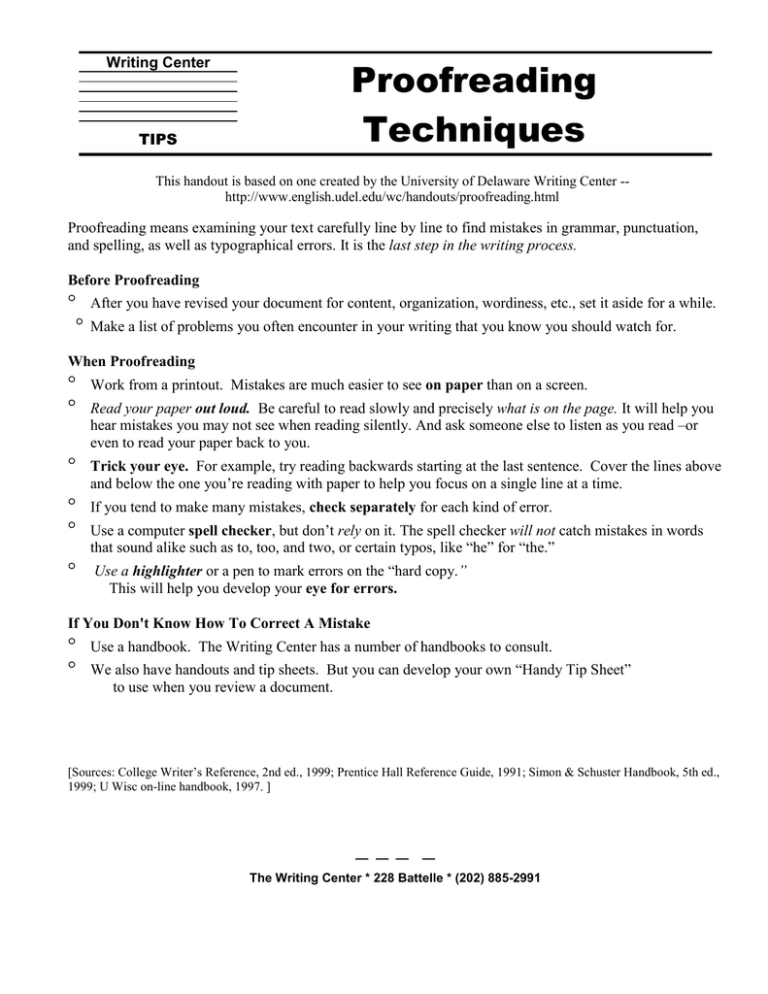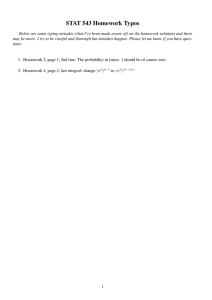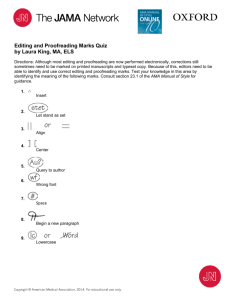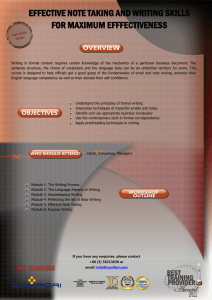Proofreading Techniques Writing Center TIPS
advertisement

Writing Center TIPS Proofreading Techniques This handout is based on one created by the University of Delaware Writing Center -http://www.english.udel.edu/wc/handouts/proofreading.html Proofreading means examining your text carefully line by line to find mistakes in grammar, punctuation, and spelling, as well as typographical errors. It is the last step in the writing process. Before Proofreading After you have revised your document for content, organization, wordiness, etc., set it aside for a while. Make a list of problems you often encounter in your writing that you know you should watch for. When Proofreading Work from a printout. Mistakes are much easier to see on paper than on a screen. Read your paper out loud. Be careful to read slowly and precisely what is on the page. It will help you hear mistakes you may not see when reading silently. And ask someone else to listen as you read –or even to read your paper back to you. Trick your eye. For example, try reading backwards starting at the last sentence. Cover the lines above and below the one you’re reading with paper to help you focus on a single line at a time. If you tend to make many mistakes, check separately for each kind of error. Use a computer spell checker, but don’t rely on it. The spell checker will not catch mistakes in words that sound alike such as to, too, and two, or certain typos, like “he” for “the.” Use a highlighter or a pen to mark errors on the “hard copy.” This will help you develop your eye for errors. If You Don't Know How To Correct A Mistake Use a handbook. The Writing Center has a number of handbooks to consult. We also have handouts and tip sheets. But you can develop your own “Handy Tip Sheet” to use when you review a document. [Sources: College Writer’s Reference, 2nd ed., 1999; Prentice Hall Reference Guide, 1991; Simon & Schuster Handbook, 5th ed., 1999; U Wisc on-line handbook, 1997. ] The Writing Center * 228 Battelle * (202) 885-2991





